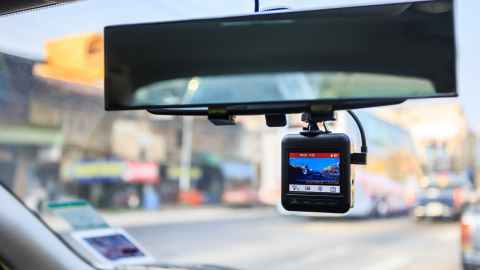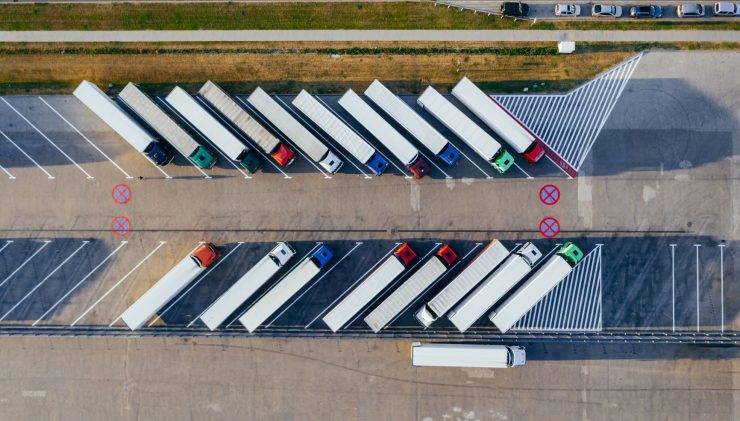 Should Your Commercial Vehicles Have Dash Cameras?
Should Your Commercial Vehicles Have Dash Cameras?It’s been a bad period for traffic fatalities and auto insurance litigation. As a result, the commercial auto insurance market has seen unprecedented volatility. Rates are up and underwriting capacity is shrinking. Now, more than ever, businesses with fleets and trucks must be proactive.
Cost Drivers
New research shows that traffic fatalities are finally declining after spiking in 2015 and 2016. However, that trend does not apply to large trucks. In 2017, large-truck fatalities increased by 4.9 percent. In 2018, large-truck fatalities increased again, this time by 0.9 percent. According to the Insurance Institute for Highway Safety, 11 percent of motor vehicle crash deaths involve large trucks.
Litigation is also on the rise, according to Insurance Business Magazine. Trucking-for-hire companies present the greatest underwriting challenge because they drive the most miles-per-vehicle and heavy vehicle weights can cause deadly accident scenarios. In litigation, attorneys aggressively look for driver safety and vehicle maintenance issues. If your driver is in an accident and any issues are identified, there is a high likelihood that your company will be found negligent.
Preemptive Measures
A few preemptive measures can help keep your drivers safe and your commercial auto insurance rates down. Focus on:
-
Distracted Driving: By now, everyone’s heard of the dangers of distracted driving. Hopefully, you’ve already implemented policies to prevent your workers from driving while distracted. This should include bans on texting while driving, but it shouldn’t end there. As an article in EHS Today explains, even hands-free devices can create dangerous distractions. The CDC defines distracted driving as anything that takes your eyes off the road, your hands off the wheel, or your mind off driving. Make sure your drivers are giving the road their full attention.
-
Fatigued Driving: It’s hard to determine exactly how many crashes are caused by drowsy driving, but we know it’s significant. According to the National Highway Traffic Safety Administration, fatigued driving is often underreported but may be involved in more than 100,000 crashes per year. The CDC says commercial drivers, shift workers, drivers with untreated sleep disorders, and drivers who take certain medications are among those with a higher risk of drowsy driving. Create policies and procedures that reduce the risk of drowsy driving.
-
Winter Weather: As cold weather sets in, it’s important to think about how rain, ice, and snow can create road hazards. Pay attention to weather alerts and keep an eye on road conditions. Make sure that drivers are prepared for an emergency and that vehicles are in good condition. Also, keep in mind that drivers may need to slow down when the weather is bad. Give them extra time.
-
Vehicle Maintenance: Commercial vehicles undergo significant wear and tear, and your company could be held liable if a lack of maintenance contributes to a crash. Make sure brakes, tires, and other truck components are regularly serviced. Maintain thorough documentation of your efforts so you have evidence that you took reasonable care to prevent issues and related accidents in case you are sued.
-
Safety Technology: When possible, equip your vehicles with the latest technology and telematics. A study conducted by General Motors and the University of Michigan found that automated safety features are effective at reducing crashes. With the right features, backing crashes can be cut by 81 percent. In American Trucker, the CEO of Cambridge Mobile Telematics says that a smartphone telematics program cut distracted driving incidents by 35 percent – in only 30 days. Hard braking was cut by 20 percent. Some carriers are beginning to offer commercial insurance discounts when safety technology is used.
At Heffernan, we partner with Our Safety Department (OSD) to provide our trucking company clients an automated software platform that allows all telematics systems to automatically report data to a central platform. This includes ELDs, dash cameras, critical events, and equipment maintenance. OSD combines all of a company’s telematics data into one simple report and can submit reports to entities such as the DOT, resulting in easier compliance with record-keeping requirements. Contact our transportation insurance division to learn more.


